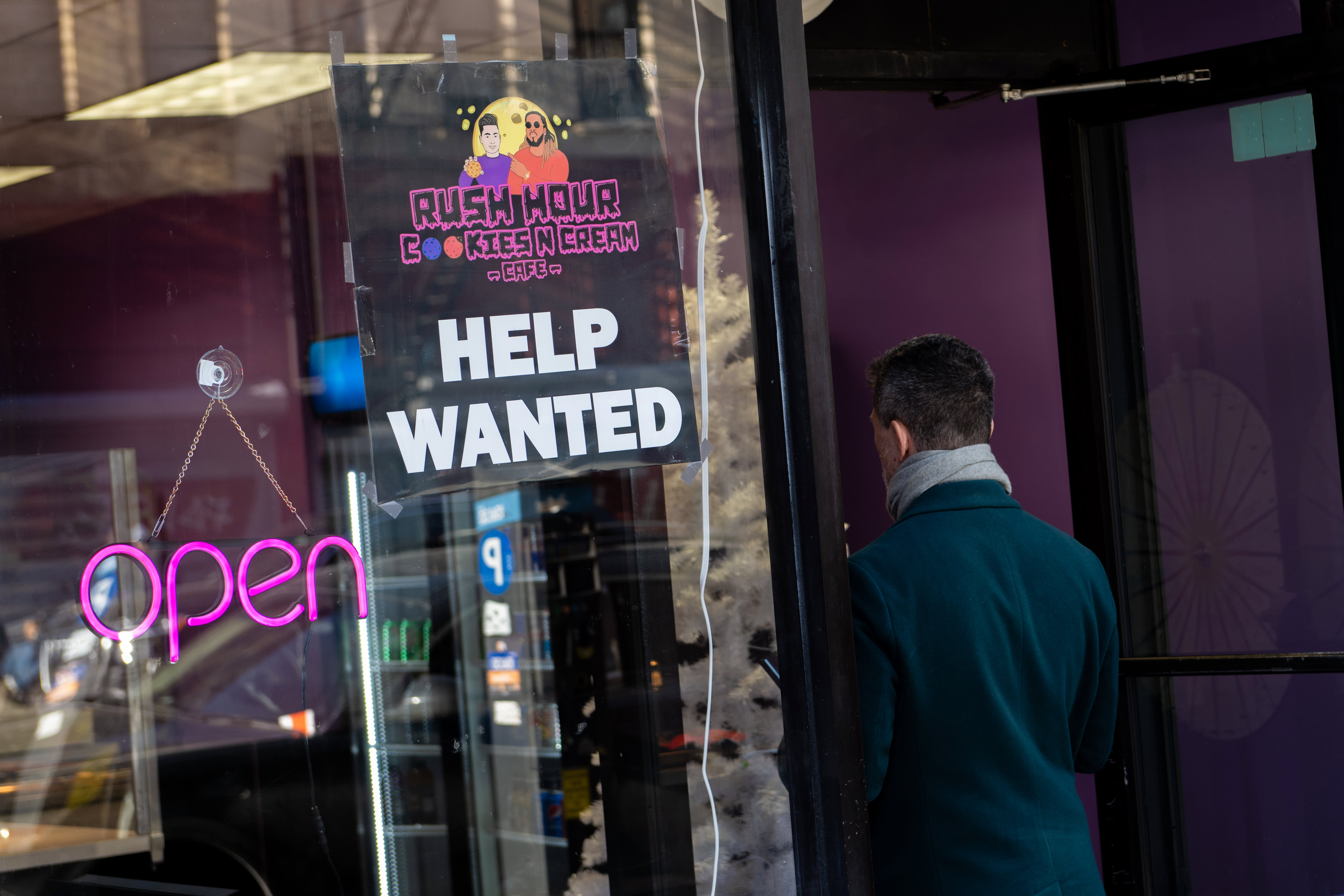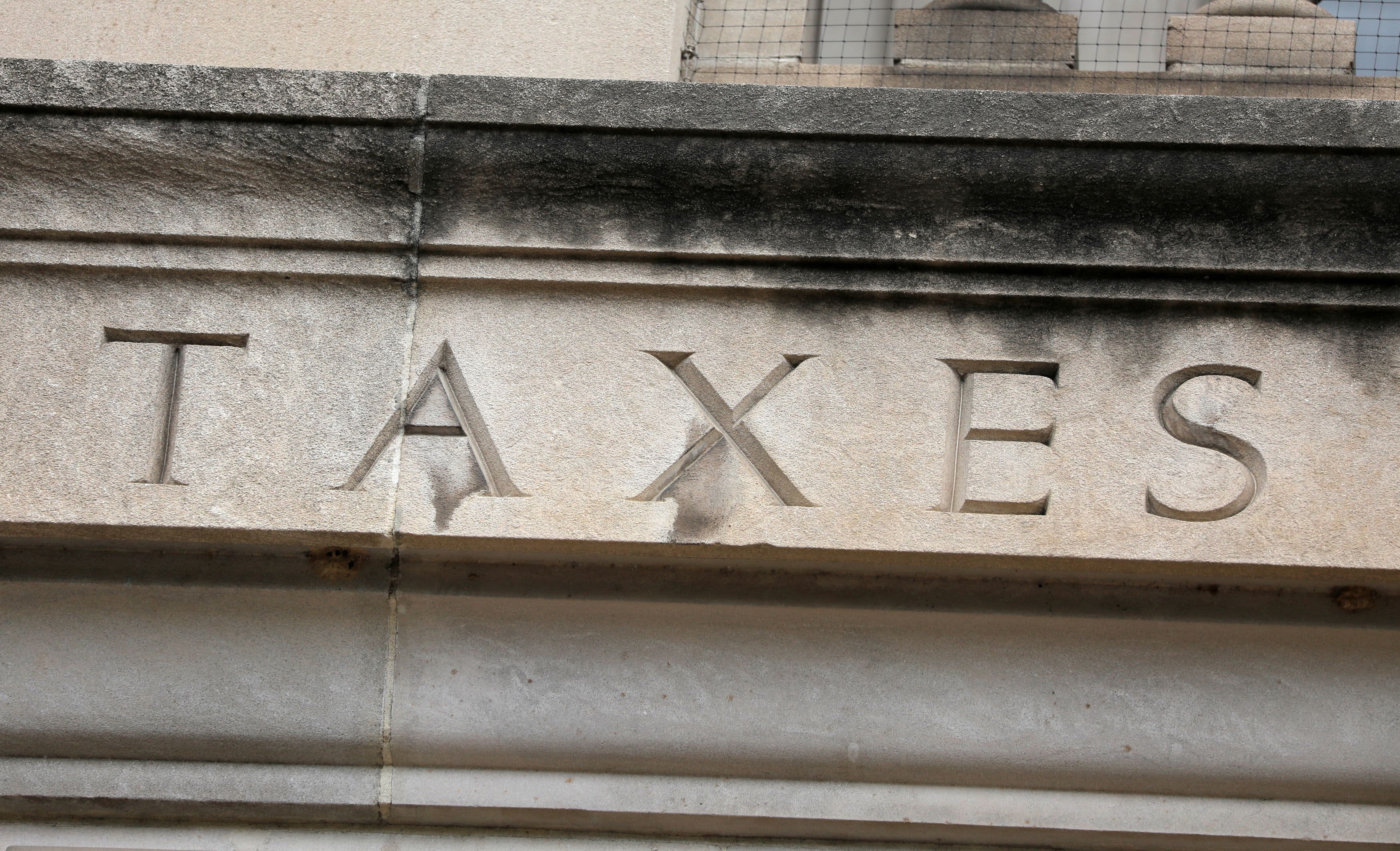January's payrolls report on Friday could be rough with as many as 400,000 jobs lost by one estimate
A jobs market that was on fire for most of 2021 looks like it had a cold splash of reality in its face to start the new year.

A person walks into a new cookie shop next to a "Help Wanted" sign on January 12, 2022 in New York City.
Alexi Rosenfeld | Getty Images
A jobs market that was on fire for most of 2021 looks like it had a cold splash of reality in its face to start the new year.
Judging by the opinions of some major Wall Street forecasters and fortified Wednesday by numbers from payroll processing firm ADP, employment either slowed to a crawl or perhaps even turned negative in January.
ADP reported that companies subtracted 301,000 jobs during the month, spurred largely by swelling omicron cases and a wider slowdown in business conditions.
The report comes two days before the Labor Department is to release its widely watched nonfarm payrolls count. Consensus estimates see a gain of 150,000, according to Dow Jones, but the drumbeat is building on Wall Street that the actual tally will be far lower. Even the White House last week cautioned that the report could be weak due to the omicron impact.
"The good news is that the job market should quickly bounce back as the omicron variant fades. Underlying demand in the economy is still strong, and businesses are still trying to hire," said Gus Faucher, chief U.S. economist at PNC. "But the January drop in employment is another reminder that the economy will not fully return to normal until the pandemic is over."
PNC is possibly the most pessimistic voice on the Street, with a projection that nonfarm payrolls contracted by 400,000 in January, including a 350,000 decline in the private sector.
The losses, Faucher said, "were likely due to a combination of factors," most of them Covid-related. They include workers either dealing with their own cases of Covid or having to take care of sick family members, parents who had to handle kids not being able to go to school, and weaker demand around pandemic-sensitive industries like bars, restaurants and hotels.
That's a familiar refrain in the economic community.
Goldman Sachs forecasts a 250,000 drop in payrolls due to "a large and likely temporary drag" due to the pandemic. At the same time, Citigroup is on the positive side, though it is predicting growth of just 70,000.
"The downside risk to payrolls has been well-telegraphed and we would not be surprised nor necessarily concerned to see an outright decline in January employment that would likely bounce back in the coming months," Citi economist Veronica Clark said in a note.
Economists believe a sharp decline in Covid cases, in which the seven-day moving average has dropped about 45% in the past two weeks, will help resuscitate the jobs market. However, that average peaked on Jan. 15, which is the same week the Bureau of Labor Statistics uses as its sample for the monthly report.
A big reversal
The changing winds follow a record year for jobs — nearly 6.5 million payroll additions despite a modest pullback in the pace over the last two months of the year. The last time the BLS report showed a negative number was in December 2020.
However, the employment level remains 2.9 million below where it was pre-pandemic in February 2020. That's due to another confluence of events, including a surge in retirements, a general labor shortage that has seen job openings outnumber available workers by 4.6 million, and myriad impacts from the pandemic.
A decline in January would push the labor market even further back and could spur an early-year growth scare in which first-quarter GDP could show little gain and possibly a loss.
From a market perspective, stocks have been rallying the past four days as some of the high-growth tech names have come back. But jitters over an economy slowing while the Federal Reserve is raising interest rates could inject some volatility back to Wall Street.
"If [Friday's report] comes in at minus-300, that might have some near-term impact," said Jim Paulsen, chief investment strategist at the Leuthold Group. "Even if you think we're going to get through it, it will scare you until that point."
Paulsen, though, is in the camp that the January numbers will prove temporary, a feeling generally shared among economists. He sees it likely that the market will look through the report and the Fed likely will not be swayed off its course of raising rates to combat swelling inflation.
"As far as it being weak, I don't know if anyone's going to give it much credence," Paulsen said. "You've clearly got omicron cases collapsing. You're seeing some high-frequency data showing some pretty significant pickups. I just think that calms a lot of the marketplace."

 Lynk
Lynk 
































